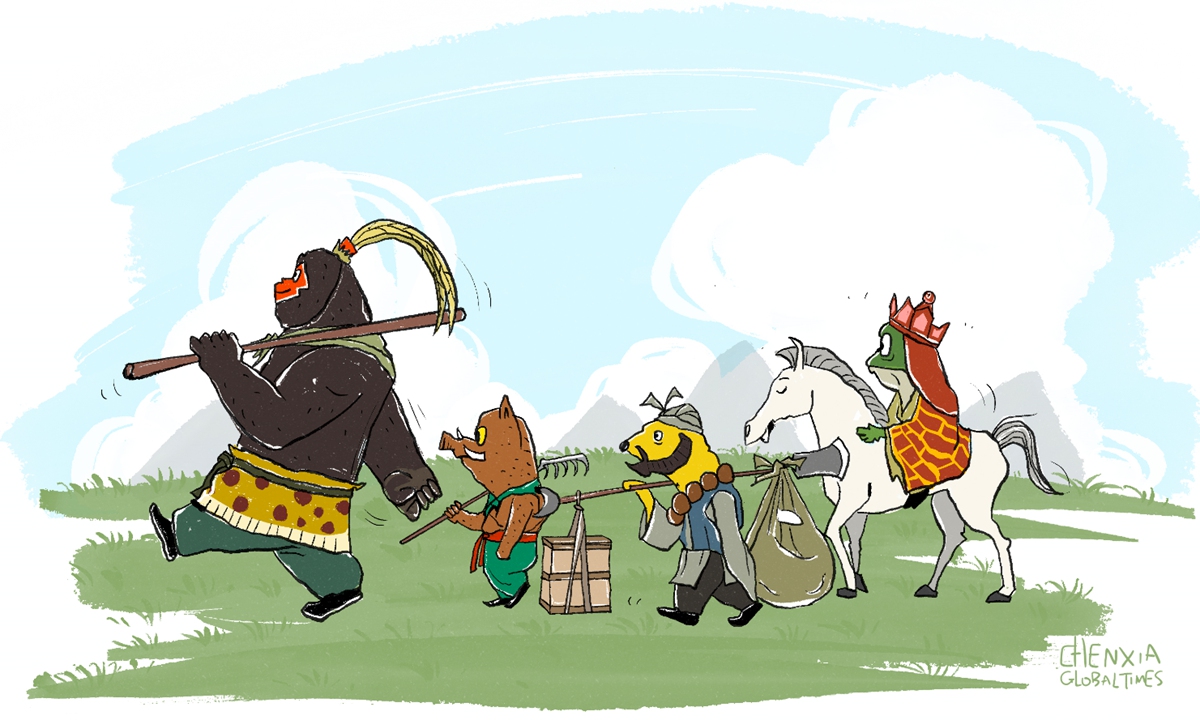A new Chinese animated series, Yao-Chinese Folktales or Zhongguo Qitan, has gone viral in China. The eight-episode program is comprised of eight separate stories that are rooted in traditional Chinese culture and ancient folklore.
Produced by Shanghai Animation Film Studio and Chinese streaming site Bilibili and created by 10 directors, each episode runs for 10 to 15 minutes, and boasts its own visual style and pacing, not unlike Netflix’s viral series Love, Death & Robots, which did phenomenally well in China.

Yao-Chinese Folktales presents a variety of art styles and techniques, including 2D animation, papercut art, puppetry, stop-motion, computer generated (CG) imagery, and cel shading, while also incorporating pencil sketches and Chinese ink wash painting.
Watch the preview below to get a taste:
The episodes touch on diverse themes, from homesickness to nostalgia and apocalypticism, exposing viewers to or reminding them of aspects of traditional Chinese culture through modern means. For example, the first episode of the series derives inspiration from the 16th-century Chinese novel Journey to the West, which has countless TV and film adaptations, including the hit Japanese anime Dragon Ball.
The new show puts a spin on the usual narrative about heroic figures, focusing instead on ‘villains’ or ‘monsters,’ while shedding light on the dilemmas and struggles faced by young workers in China.

Yao-Chinese Folktales currently holds a whopping score of 9.6/10 on the Chinese review platform Douban.
After watching the first episode in the series, one Douban user said, “As a kid, I thought I would become the Monkey King, but in fact, I only grew up into a no-name Monster who will never meet the king.”
“Love this neat, traditional Chinese 2D animation that is not influenced by Western or Japanese styles!” gushed another netizen.

Established in 1957, Shanghai Animation Film Studio is known for its output marked by Chinese artistic styles. The studio has created successful Chinese animated titles for decades, including The Monkey King: Havoc in Heaven (1961-1964), Nezha Conquers the Dragon King (1979), Black Cat Detective (1984), Calabash Brothers (1986), and Lotus Lantern (1999).
Although the company hasn’t produced much notable work since the 2000s, the Chinese animation industry as a whole has grown significantly in the past half-decade. The domestic animation market grossed 269 billion RMB (about 39 billion USD) in 2020, and is expected to reach 641 billion RMB (around 95 billion USD) in 2025.
The past two years alone have seen releases like Fog Hill of Five Elements, New Gods: Yang Jian, I Am What I Am, New Gods: Nezha Reborn, and Green Snake, with the last two also streaming on Netflix.
As observant readers may notice, many of aforementioned productions are inspired by ancient tales of monsters and mythical beings called yaoguai (妖怪). Many of the stories first appeared in Strange Tales From a Chinese Studio or Liaozhai Zhiyi (聊斋志异), a 17th-century collection of 500 short stories written by Pu Songling.

Bilibili can be credited with giving China’s animation scene a strong push. What was formerly an anime-driven platform is now pivoting towards Chinese animation called donghua. In fact, the company has seen viewership of donghua surpass that of anime.
“Bilibili’s 10-year ambition between 2014 and 2024 is to become a Chinese anime hub, driving the Asian animation industry and leading the way in both output and viewership in the next decade,” said Bilibili vice chairman Li Ni.
Watch ‘Yao-Chinese folktales’ with English subtitles on Bilibili.
CORRECTION: This article was updated at 1:30 PM on January 16, 2023, to clarify that ‘Liaozhai Zhiyi’ was mostly written and published in the 17th century.
All images courtesy of Bilibili














